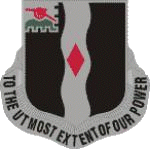HURTGEN FOREST, GERMANY, SEPTEMBER - OCTOBER 1944
(Rhineland Campaign)
By Major William B. Sullivan, Infantry

ANALYSIS and CRITICISM
The combat efficiency of a unit depends on, among other things, the rate of loss of experienced soldiers coupled with the rate of assimilation of new ones. If this rate is fairly constant, the combat efficiency will also be fairly constant. The degree of efficiency will be determined, to a large extent, by the numbers involved. That is to say, an equilibrium will be established between the combat efficiency, and the losses and replacements involved. The equilibrium was destroyed for the 60th Infantry by the almost complete annihilation of the 2d Battalion at the Meuse River. The replacement system alone was inadequate to repair the damage done. Any measures taken to correct deficiencies caused by inordinate losses must include as a minimum:
- Withdrawal from action.
- Replacement of losses.
- Thorough retraining.
Combat in wooded areas is generally recognized as a special operation just as is amphibious operation, or fighting in towns. No special training was conducted for the 60th Infantry as a whole, whereas the need for it was definitely indicated. For instance; the extreme darkness encountered at night was a handicap to the attacker because of the ease with which men could get lost both in location and direction. With training in special means of control, it could have been made to be an aide. A night attack might have prevented the enemy from covering their emplacements in front of the 2d Battalion. The enemy recognized and took advantage of our ignorance by conducting night operations against us, these usually netting them ground or pillboxes they had just lost. Witness this statement of our adversaries: "In combat in wooded areas the American showed himself completely unfit."
Having proved quickly and unmistakably that piecemeal efforts at clearing the forest, or even pushing through it, were unprofitable, these efforts should have been abandoned in favor of coordinated attacks supported at least by normal arms, if not by special ones. The enemy counterattack of 22 September clearly showed, I think, that stronger resistance than had been anticipated was definitely an enemy potentiality.
The use of surprise and maneuver bore amazing results and should have been reported to sooner. The success gained by the 1st Battalion every time it made a sudden change in direction more or less bore out the contention that originally this ground was lightly posted, but that once a threat appeared in the form of a commitment in a certain direction, the enemy gathered in front of it, and resistance stiffened.
Then the enemy recaptured pillboxes, the take in prisoners was usually substantial.
This fact tends to show that many of the attackers succumbed to the temptation
to get in out of the cold, where they tended to became drowsy and otherwise
unalert. Effective defense of these installations cannot be conducted from
the inside because the embrasures face the wrong way. While we have them they
are detriments which are comparatively easily recaptured. When the enemy gets
them back, they become strong points which are just as effective as they were
before they were originally captured.
LESSONS LEARNED
- Capture enemy pillboxes should be demolished or otherwise disposed of so that they can never again be used by the enemy as strong-points even if the ground is recaptured.
- Troops about to undergo combat in wooded areas should receive special training so that they may overcome the peculiarities of such combat, which will otherwise prove to be detriments.
- All units should receive special training in night operations. Among other things, if you know how to operate in the dark yourself, you can better estimate the capabilities of the enemy with respect to darkness, and this way serve to avoid being surprized.
- Combat in forests favors the defender. The woods limit the use of tanks and other large calibre direct fire weapons. The defenders have all the material at hand for individual, effective cover.
- Artillery in wooded area combat favors the defender especially in thick woods. Artillery shells are nearly always tree burst missiles against which log covered emplacements are effective. The attackers, on the other hand, must move out of their shelters to attack, and not only enemy, but sometimes friendly artillery takes a terrific toll.
- While not strictly a lesson learned in this operation, it was confirmed and re-emphasized that surprize is a deadly weapon no matter on whose side it lies.
- Sudden changes in maneuver are possible because of the strictly limited observation of the enemy. Such changes increase the probability of surprize.
- A coordinated effort is nearly always better than a piecemeal one, especially if the element of surprize has been lost.
- Pillboxes are comparatively blind and need additional observation. and defense from the outside whether they face in the right direction or not.
- Tanks, if they can be gotten into firing positions, are very effective in overcoming wooded shelter positions.
- When combat efficiency of a unit is too low to make it effective as a fighting force, the correction is not replacements alone, but replacements and surcease from combat for training for training purposes until such time as theefficiency is raised.
- Artillery concentrations along a, line of retreat of a displaced enemy, especially in wooded areas, cause numerous casualties.


